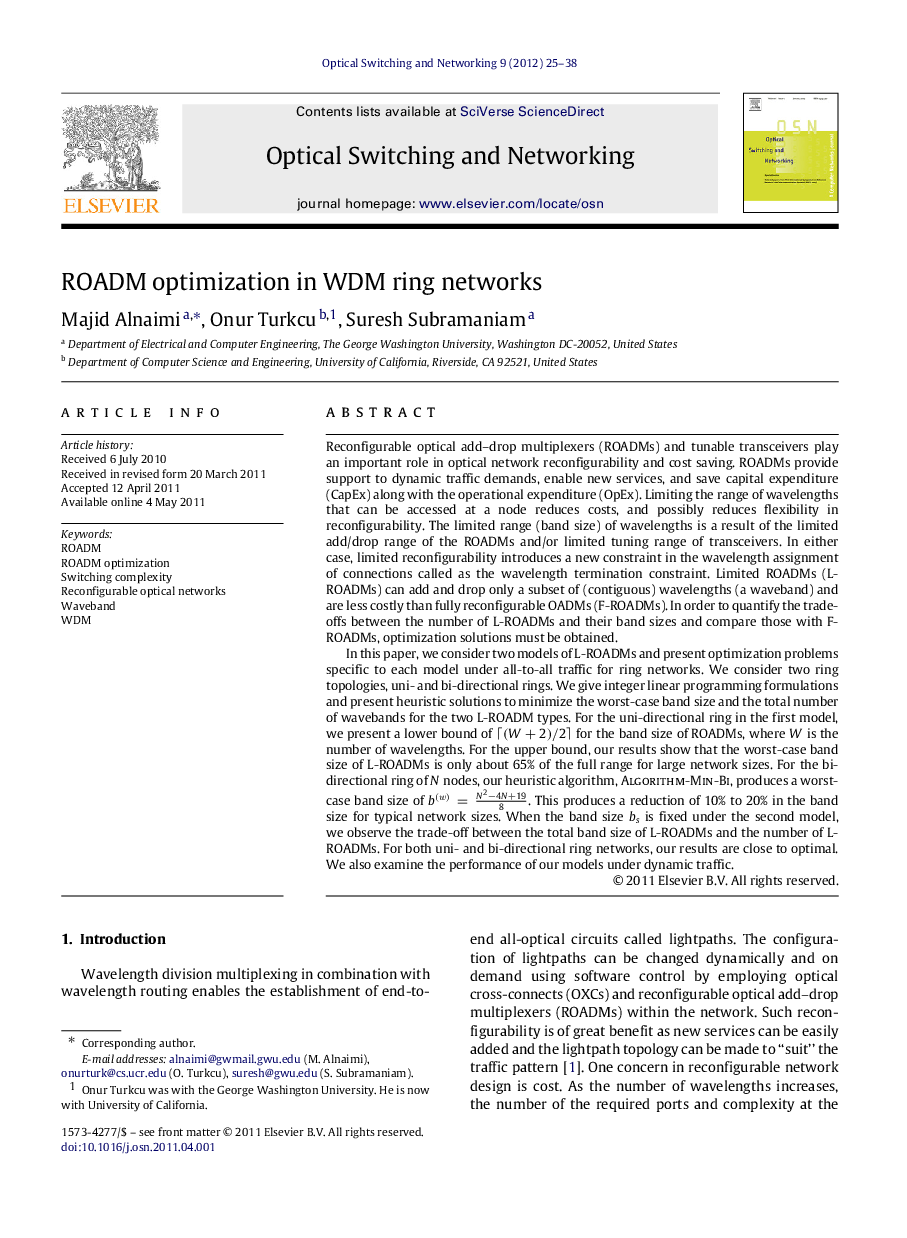| کد مقاله | کد نشریه | سال انتشار | مقاله انگلیسی | نسخه تمام متن |
|---|---|---|---|---|
| 463624 | 697158 | 2012 | 14 صفحه PDF | دانلود رایگان |

Reconfigurable optical add–drop multiplexers (ROADMs) and tunable transceivers play an important role in optical network reconfigurability and cost saving. ROADMs provide support to dynamic traffic demands, enable new services, and save capital expenditure (CapEx) along with the operational expenditure (OpEx). Limiting the range of wavelengths that can be accessed at a node reduces costs, and possibly reduces flexibility in reconfigurability. The limited range (band size) of wavelengths is a result of the limited add/drop range of the ROADMs and/or limited tuning range of transceivers. In either case, limited reconfigurability introduces a new constraint in the wavelength assignment of connections called as the wavelength termination constraint. Limited ROADMs (L-ROADMs) can add and drop only a subset of (contiguous) wavelengths (a waveband) and are less costly than fully reconfigurable OADMs (F-ROADMs). In order to quantify the trade-offs between the number of L-ROADMs and their band sizes and compare those with F-ROADMs, optimization solutions must be obtained.In this paper, we consider two models of L-ROADMs and present optimization problems specific to each model under all-to-all traffic for ring networks. We consider two ring topologies, uni- and bi-directional rings. We give integer linear programming formulations and present heuristic solutions to minimize the worst-case band size and the total number of wavebands for the two L-ROADM types. For the uni-directional ring in the first model, we present a lower bound of ⌈(W+2)/2⌉⌈(W+2)/2⌉ for the band size of ROADMs, where WW is the number of wavelengths. For the upper bound, our results show that the worst-case band size of L-ROADMs is only about 65% of the full range for large network sizes. For the bi-directional ring of NN nodes, our heuristic algorithm, Algorithm-Min-Bi, produces a worst-case band size of b(w)=N2−4N+198. This produces a reduction of 10% to 20% in the band size for typical network sizes. When the band size bsbs is fixed under the second model, we observe the trade-off between the total band size of L-ROADMs and the number of L-ROADMs. For both uni- and bi-directional ring networks, our results are close to optimal. We also examine the performance of our models under dynamic traffic.
Journal: Optical Switching and Networking - Volume 9, Issue 1, January 2012, Pages 25–38